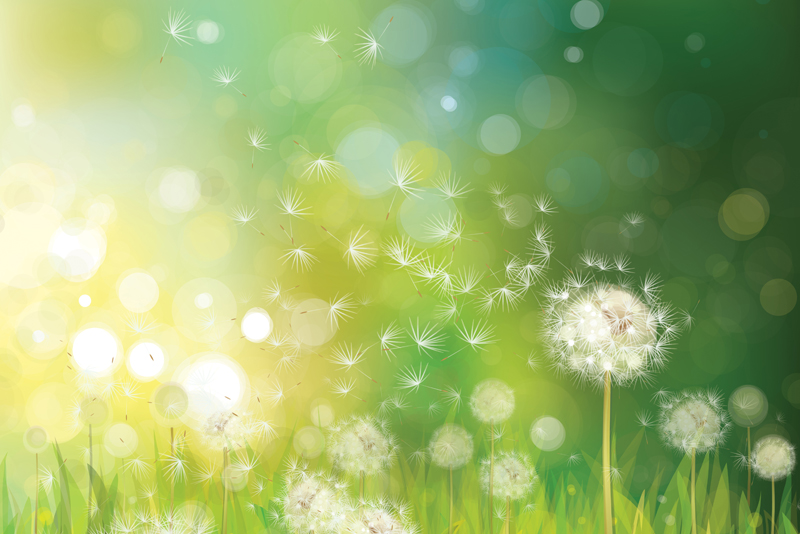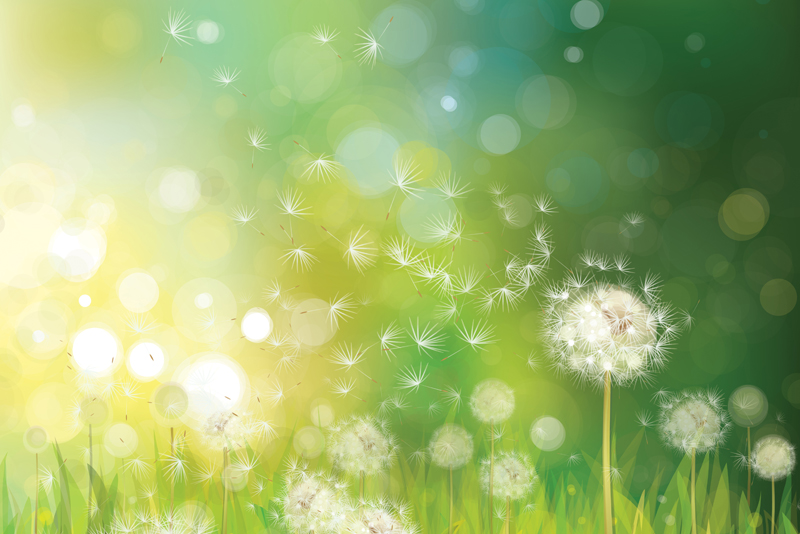Fall allergies

When fall arrives, another round of itchy eyes, sneezing and nasal congestion will begin for the estimated 50 million allergy sufferers, including six million children. The key players in bringing on allergy attacks are fall-blooming weeds, as well as household dust mites and molds. Over the past 17 years, fall allergy season has been lasting longer because the first frost has been arriving later and later.
Every year, pollen counts get higher and higher. Why is this? Experts say there is a warming trend in our environment which makes the growing season longer.
Fall is often the worst allergy season for many people. Several factors could make this fall allergy season even more difficult.
Ragweed season lasts longer due to rising temperatures and carbon dioxide levels.
Weeds tend to produce more pollen in the fall. Areas with lots of construction tend to have more weeds than established landscaping and gardens.
Record rains in some areas accounts for some excessive pollen.
The main weed villain is ragweed, which provokes an estimated 85-90 percent of symptoms. Ragweed pollen may be less in some areas this year because of the long, dry summer in many places. Ragweed grows much better when it is wet and rainy. However, some areas are reporting more ragweed over a longer season.
Ragweed begins to bloom in mid-August and continues until late October or longer depending on when the first frost occurs. Each plant can produce one billion pollen grains, with each capable of traveling 400 miles. Other culprits are pigweed, plantain, sheep sorrel, sagebrush and late-blooming trees.
Ragweed, which resembles a young tomato plant, can be found along roadsides, and in vacant lots and fields, and other sunny spots. Almost no place in the U.S. is ragweed-free but the plant is most prevalent in the Northeast, South and Midwest. Ragweed season is expected to be average in the South and Midwest because of drought conditions.
An estimated 3.8 million days of work and school are missed due to seasonal allergies, according to the American Academy of Allergy, Asthma and Immunology. Allergies rank as the sixth-leading cause of chronic disease in the U.S.
Fall allergy symptoms are similar to those of the common cold but without a fever, muscle aches or yellow mucous. Nasal drainage from allergies stays clear. Sufferers may experience fatigue, insomnia, and problems with concentration and work performance. Fall allergies can weaken your immune system and make you more susceptible to colds, flu or sinus infections.
Fall allergies usually do not let up until after the first hard frost.
Every year, pollen counts get higher and higher. Why is this? Experts say there is a warming trend in our environment which makes the growing season longer.
Fall is often the worst allergy season for many people. Several factors could make this fall allergy season even more difficult.
Ragweed season lasts longer due to rising temperatures and carbon dioxide levels.
Weeds tend to produce more pollen in the fall. Areas with lots of construction tend to have more weeds than established landscaping and gardens.
Record rains in some areas accounts for some excessive pollen.
The main weed villain is ragweed, which provokes an estimated 85-90 percent of symptoms. Ragweed pollen may be less in some areas this year because of the long, dry summer in many places. Ragweed grows much better when it is wet and rainy. However, some areas are reporting more ragweed over a longer season.
Ragweed begins to bloom in mid-August and continues until late October or longer depending on when the first frost occurs. Each plant can produce one billion pollen grains, with each capable of traveling 400 miles. Other culprits are pigweed, plantain, sheep sorrel, sagebrush and late-blooming trees.
Ragweed, which resembles a young tomato plant, can be found along roadsides, and in vacant lots and fields, and other sunny spots. Almost no place in the U.S. is ragweed-free but the plant is most prevalent in the Northeast, South and Midwest. Ragweed season is expected to be average in the South and Midwest because of drought conditions.
An estimated 3.8 million days of work and school are missed due to seasonal allergies, according to the American Academy of Allergy, Asthma and Immunology. Allergies rank as the sixth-leading cause of chronic disease in the U.S.
Fall allergy symptoms are similar to those of the common cold but without a fever, muscle aches or yellow mucous. Nasal drainage from allergies stays clear. Sufferers may experience fatigue, insomnia, and problems with concentration and work performance. Fall allergies can weaken your immune system and make you more susceptible to colds, flu or sinus infections.
Fall allergies usually do not let up until after the first hard frost.

Related Articles
Editor's Picks Articles
Top Ten Articles
Previous Features
Site Map
Content copyright © 2023 by Sheree Welshimer. All rights reserved.
This content was written by Sheree Welshimer. If you wish to use this content in any manner, you need written permission. Contact Sheree Welshimer for details.



